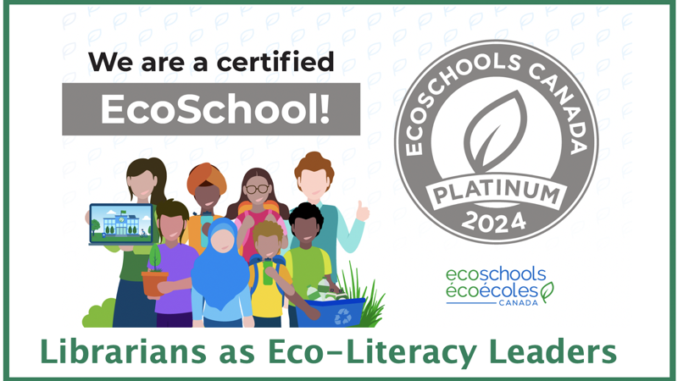
By Tracey Donaldson
As a teacher-librarian, I have had the pleasure of having a fulfilling career that has evolved over the years, learning and growing as an educator each year. One constant has been having captive audiences of all grades to teach a variety of subjects through partnering and collaboration. I believe that this partnership with teachers and their students is the vehicle for environmental education. Teacher-librarians are knowledgeable, resourceful, and usually at the forefront of new information, tools, and technologies. We also help staff move from conventional teaching to transformative learning. In our library, books aren’t the only means of learning. The library is a space for critical thinking and experiential learning. Students learn to have a voice in their own learning and understand that they are active learners and responsible citizens in our school community. It has been my goal to embed ecological literacy throughout my teaching in the library.
Reconciliation with the Land
As part of my journey to work on the Truth and Reconciliation Commission of Canada: Calls to Action, it has been my priority to teach students to appreciate the land that serves us. Students of all grades can learn to observe with all of their senses. If you are blessed with teaching in a place that has an outdoor learning space, a local forest, or simply just a few trees, getting outside of the library and immersing students in nature is so beneficial. Take the books, the clipboards, the technology, and the nature journals outside whenever and however possible. The best read aloud sessions are done outside the walls of the school building, breathing in fresh air, listening without distractions, other than the sounds of nature. I’ve noticed students developing a deeper connection to the environment, recognizing the land’s significance not only as a resource but as a living entity with its own stories and history. Whenever I am outside to teach, or for yard duty, students come to me to share some of their observations from our outdoor space with such joy and wonder.
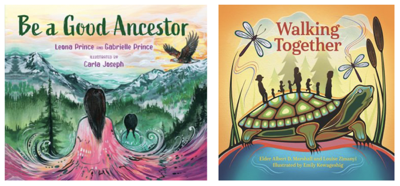
Beginning with the land is an approach that fosters respect for Indigenous knowledge and traditions, which have long emphasized the interconnectedness of all living things. The goal is for students to have a more respectful and meaningful relationship with both the land and its original caretakers. Students will learn to see their role in becoming stewards of the land… and maybe even teach the adults in their lives to be respectful caretakers of the environment and the community they live in.
Climate Change Focus
The urgency of a changing world is enough reason to make climate change education a focus in our teaching. As librarians, we have the power to reach all students in many grades and to help prepare them for significant global challenges and become advocates for their world.
Climate education helps our students understand the science behind environmental changes, the impacts on ecosystems and communities, and the role of human activity in accelerating these shifts. By learning about climate change, students become informed citizens capable of making sustainable decisions and advocating for changes to avoid environmental harm. Climate education fosters critical thinking, innovation, and a sense of responsibility toward preserving the planet for future generations, encouraging collective action and resilience in the face of climate challenges.
Eco Anxiety
When we start teaching about the impacts of humans on the environment and the devastation to populations of plants and animals, it is inevitable that our students will feel a sense of eco anxiety. It can feel overwhelming when students start to research and learn the truth about our climate changing. They are all experiencing the effects of climate change in their communities in different ways. We can validate those eco anxiety emotions and use them to motivate students to take actions. To work through these feelings, I encourage students to pick one thing that they can do daily to help our environment.
Curriculum Connections and Collaboration
Throughout the Science curriculum in Ontario, there is a theme of learning about the human impacts on the environment. This is the theme I focus on in the library with primary and junior classes. The curriculum integrates concepts related to ecosystems, biodiversity, climate change, and conservation, encouraging students to understand and respect the natural world. Through inquiry-based learning, students are encouraged to explore human impacts on the environment, evaluate sustainable practices, and develop problem-solving skills to address environmental challenges. As the teacher librarian, I have enjoyed directing students and teachers to all of the wonderful resources that exist to support eco literacy.
Grants and Contests
As many of us have witnessed, library budgets have decreased over the years. I am very deliberate about spending my school library budget money to support all areas of the curriculum. In order to do some of this environmental work, I’ve supplemented the given budget by applying for grants and entering student-centred contests. We’ve also been resourceful in reaching out to companies who are willing to donate. By making use of grants, I have been able to give students experiential, environmental learning experiences throughout the year.
Growing Greens
Receiving grant money has allowed us to begin a “Greens for All” project over the course of three years. We have purchased seven Tower Gardens to grow greens hydroponically, indoors. Our focus was to be able provide fresh, healthy foods that are grown locally and accessible to all students in our communities. Some added bonuses are the sounds of the flowing water in the library, and added moisture in classrooms that are often very dry spaces. Over the years we’ve been growing, we have harvested and handed out over 200 containers of greens to our school community. We often have students requesting more greens once they’ve been able to share it with their families.
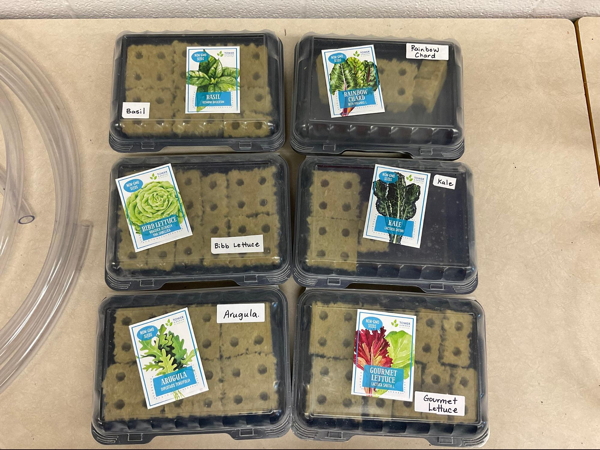
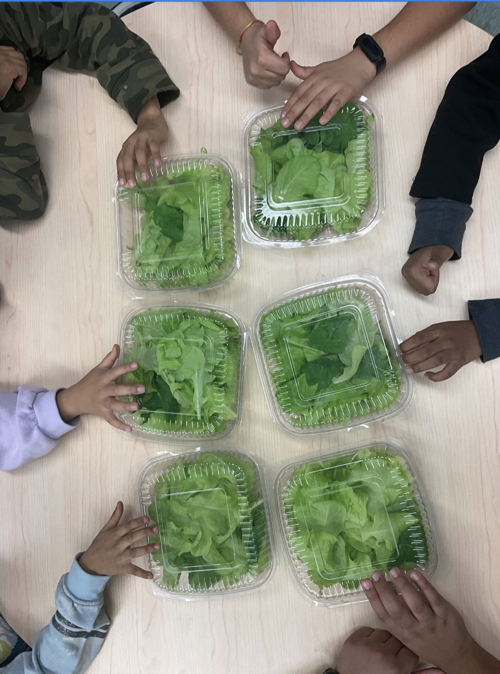
We start seedlings and get our Tower Gardens growing throughout the year. Students take packages of greens to enjoy at home. We’ve harvested and handed out over 200 containers of greens from our Tower Gardens over the past 3 years.

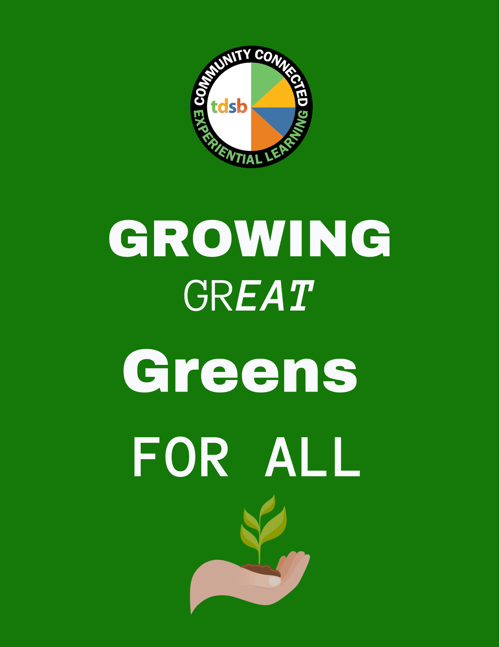
Student Initiatives and SDGs
When I work with the junior students for Social Studies or Science learning, we begin by exploring the UN Sustainable Development Goals (SDGs). Grade 6 students begin a Genius Hour project that they work on throughout the year. Genius Hour projects centred on the UN Sustainable Development Goals provide students with a unique opportunity to explore eco-projects that make a real impact. Throughout the year, students can choose a specific environmental or sustainability goal, such as clean water and sanitation, affordable and clean energy, or climate action, and design inquiry-based projects that contribute to achieving that goal. By aligning their work with the SDGs, students not only learn about global environmental challenges but also engage in hands-on, solution-oriented projects that foster creativity, critical thinking, and problem-solving skills. These projects encourage students to become eco-leaders within their communities by promoting sustainable practices, raising awareness, and implementing innovative solutions. Ultimately, Genius Hour becomes a powerful platform for students to drive positive environmental change and build a lifelong commitment to sustainability.
EcoSchools Eco Actions
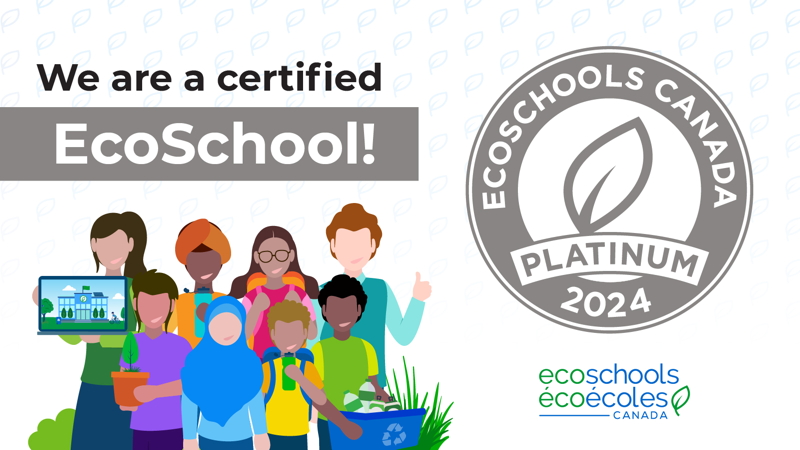
We then connect the SDGs to EcoSchools actions. Students are invited to choose an action that they would like to work with. Some of the actions are worked on in classrooms, clubs or through their Genius Hour projects. Students working on projects tied to EcoSchools Eco Actions gain a meaningful opportunity to engage with hands-on environmental initiatives that impact their school and community. By aligning their projects with the EcoSchools framework, students can choose actions such as reducing waste, promoting biodiversity, conserving energy, or supporting sustainable transportation. These projects help students understand the importance of environmental stewardship as they monitor their progress, set achievable goals, and reflect on their actions’ impact. Through these projects, students not only enhance their own knowledge and skills but also inspire their peers and local community to adopt more eco-friendly practices. The EcoSchools Eco Actions framework provides resources, clear guidelines and support, making it easier for students to turn ideas into action and see tangible results that contribute to a healthier, greener planet. Student actions have been the driving force of our school receiving Platinum status!
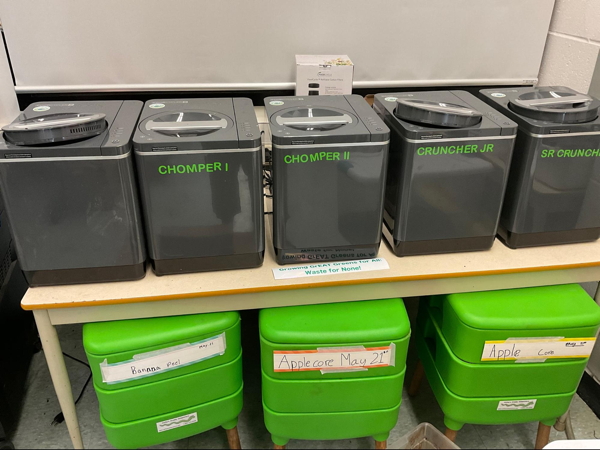
Composting and Food Waste
We’ve all heard of book worms in the library… but how about red wigglers and nightcrawlers living in the library? Again, with the support of some grant money, I have been able to acquire seven vermicomposters for the school. Students of various grades attend workshops in the library to learn about worm composting with Cathy Nesbitt from Cathy’s Crawly Composters. Classrooms then become responsible for maintaining the composter throughout the year by adding food scraps, often from their school snacks (e.g. banana peels, apple and pear cores). Students who learn about the benefits of worm composting no longer see worms as “icky and gross” and learn to appreciate the worm poop they get to put their hands in! In fact, there are many benefits of getting our hands dirty and putting them in soil!
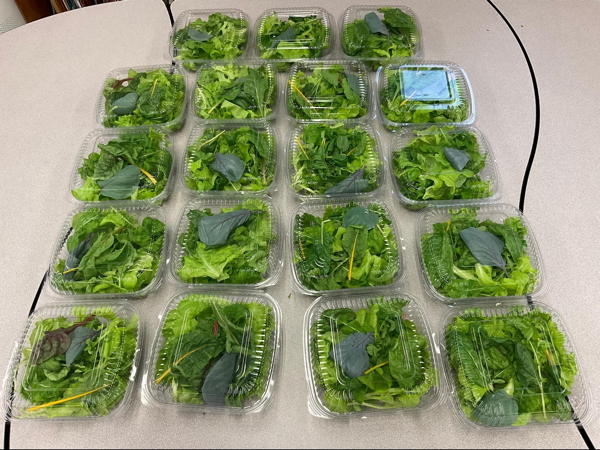
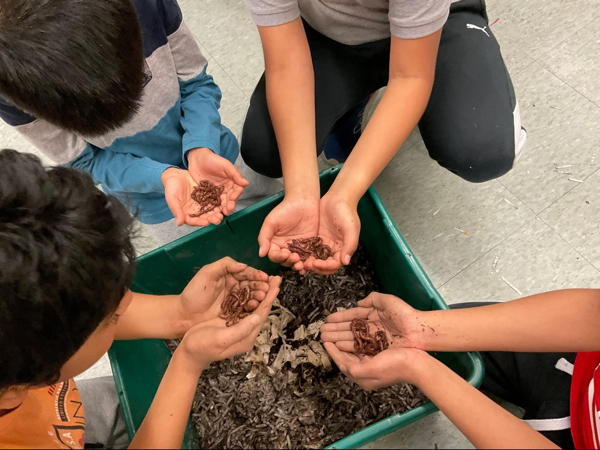
We have also purchased five Foodcyclers to reduce our waste in a different way. When we have too many food scraps from our snack program or lunches, we are able to use the FoodCyclers to turn the waste into what has been named “foodilizer”. It is dehydrated and crushed up food waste. This is not compost because it does not have the microorganisms required to break down the matter. Instead, it is foodilizer that we can add to soil in our outdoor gardens. We have also reintroduced the foodilizer into our vermicomposters for the worms to enjoy and turn into compost. And yes, these Foodcyclers are stored in the library in a section for students to manage by weighing the waste and putting it into the machines and collecting for use. By using our vermicomposters and Foodcyclers, we have reduced the amount of Green bin waste by 85%.
Interconnected
We are also fortunate that our school has prioritized Outdoor Learning. We have another staff member who is also dedicated to giving students experiences outside and uses the resources from the library regularly to support her teaching. By getting outside students learn that we are interconnected with the land which deepens their understanding of both the natural world and their role within it. This understanding fosters a sense of responsibility as they come to see the direct effects of their actions on the environment, from the food they eat to the water they use and the waste they produce. Field studies, outdoor learning, and Indigenous teachings about land stewardship provide students with experiential insights into how communities have lived sustainably for generations, respecting the land as a source of life and community connection. As students begin to appreciate and care for the land, students think critically about their place within the world and how they can have a reciprocal relationship with the land. Stewardship and reciprocity are two words we explore on many levels in the outdoors and in our classroom.
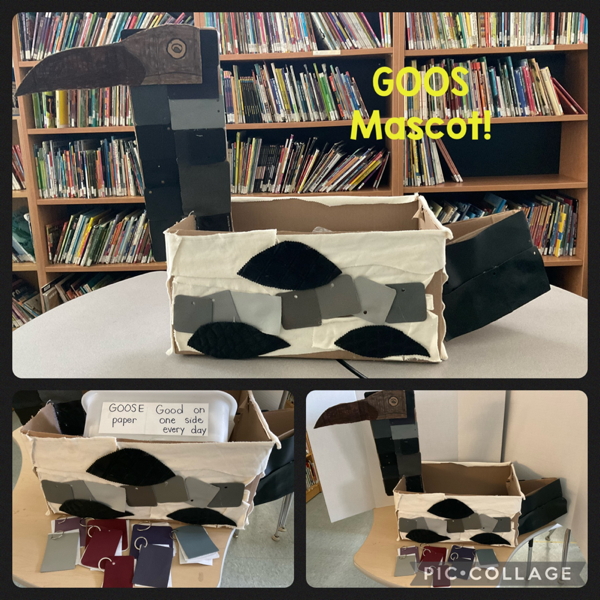
Books and Resources
Over the past few years, I have deliberately increased the number of books we have that connect to the environment. Increasing eco-literacy resources in a school library is a powerful way to empower students with knowledge and encourage sustainable habits that impact their communities and the world. In the library they see a diverse selection of environmental learning materials that engage students at all educational levels. I’ve worked with Kindergarten students to do something as simple as having them explore a series of books about birds and then spend time outside observing the birds in our gardens. From the books they draw on iPads and head outside to try and get photos. Seeing the wonder and joy as they use binoculars to see the birds in our gardens is long lasting. I have also collaborated with local environmental organizations to offer workshops, or have invited virtual guests to share information related to student projects. When eco-literacy resources are readily available and visible in the library, they not only educate but also inspire, nurturing a generation of environmentally-conscious citizens equipped to make informed decisions about sustainability in their lives and perhaps future careers.
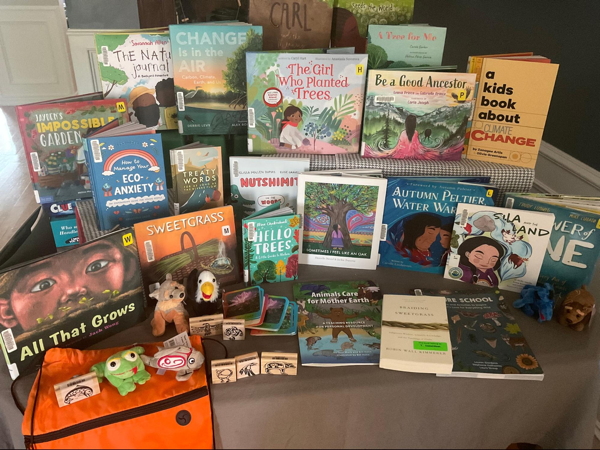
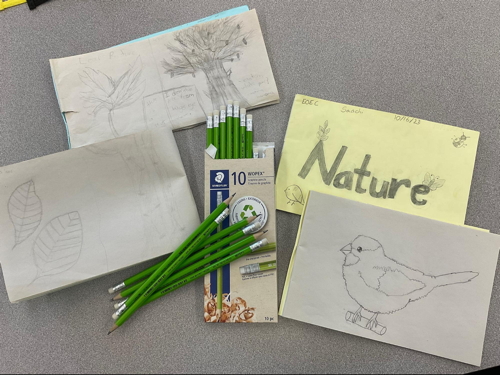

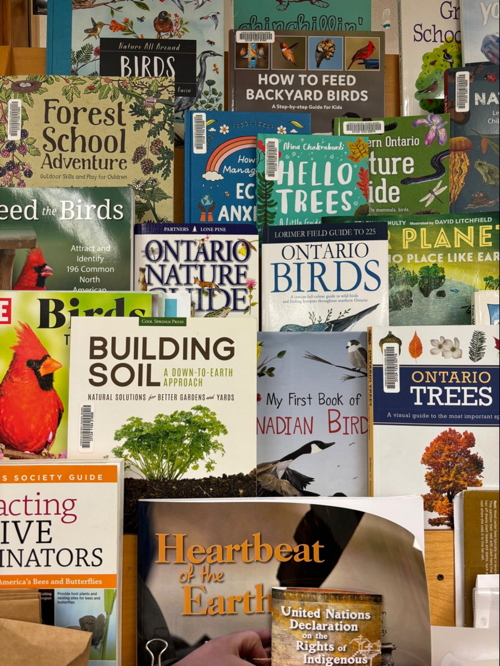
Most libraries have created makerspaces, in our library, the makerspace is for environmental actions. It’s a working eco literacy space for experiential learning! It is my hope that by providing them with experiential, environmental learning, I inspire students to engage in climate justice actions throughout their future.
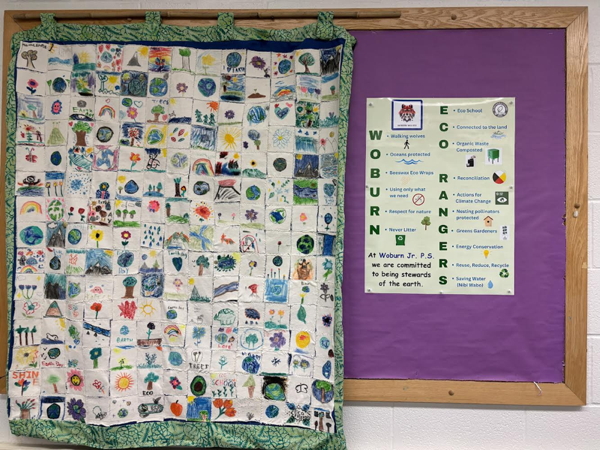
Resources for Further Exploration
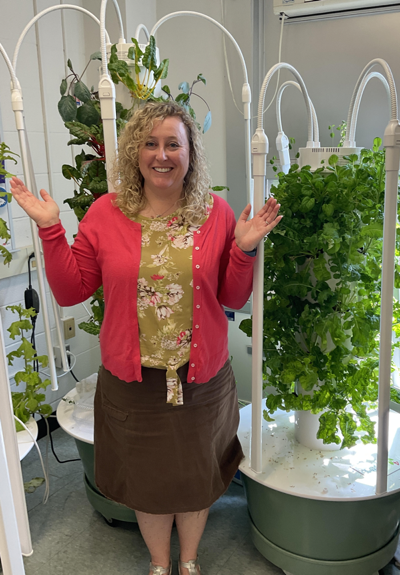
Marshall, A., Zimanyi, L. and Kewageshig, E. (2023). Walking together. Annick Press.
Prince, G., Prince, L. and Joseph, C. (2022). Be a good ancestor. Orca Book Publishers.
Angalik, S., Roundpoint, A., Dupré, L. and Finney, H. (2013). Sila and the land. ED-ucation Publishing.
Robertson, J. (2017). The water walker. Second Story Press.
Kozak, S. and Elliott, S. (2014). Connecting the dots: Key strategies that transform learning for environmental education, citizenship and sustainability. Learning for a Sustainable Future.
Kimmerer, R. W., Gray Smith, M., Neidhardt, N. and Kimmerer, R W. (2022). Braiding sweetgrass for young adults : Indigenous wisdom, scientific knowledge, and the teachings of plants. Zest Books.
Winter, J. (2019). Our house is on fire : Greta Thunberg’s call to save the planet. Simon & Schuster.
The Outdoor Learning Store: https://outdoorlearning.com
Cathy’s Crawly Composters: https://www.cathyscomposters.com
Learning for a Sustainable Future: https://lsf-lst.ca
GreenLearning: https://greenlearning.ca
EcoSchools Canada: https://ecoschools.ca
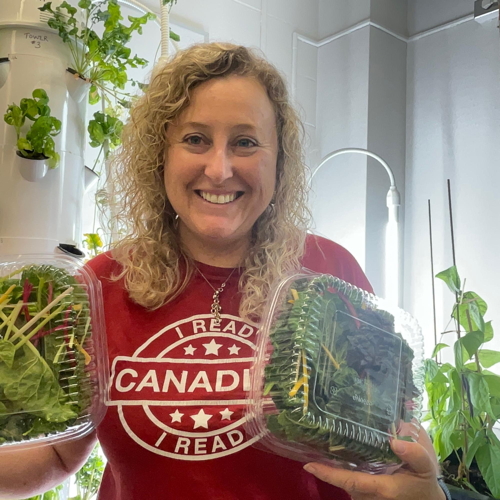
Tracey Donaldson has spent the majority of her 26 years teaching with the Toronto District School Board as a teacher-librarian and as a Junior teacher. She strives to create a welcoming space for all users and help learners find their passions. Tracey is passionate about environmental literacy and Growing GrEAT Greens for All! Plants and picture books are her weaknesses!